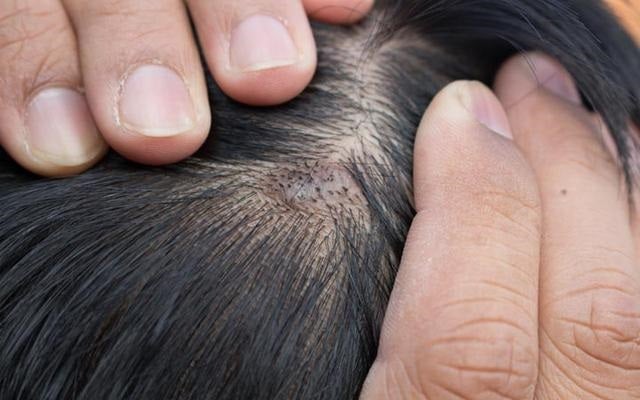Pimples can appear on any part of your body, including your face, back, chest, arms, and hairline. You may notice hairline pimples when brushing or styling your hair, which could be an issue. This article explains what causes hairline pimples and how to get rid of them.
What is a pimple?
A pimple is caused by excess oil or dead skin that builds up within a pore in your skin. Oil glands in your skin create sebum, which protects and lubricates your hair and skin. Sebum buildup in a pore can cause redness and swell on the skin.
Causes of hairline acne
Hairline pimples are caused by the following factors:
Hygiene: Oils and dead skin build up over time, especially in hairy areas. Maintain good hygiene and wash your hair and skin on a daily basis, especially after exercise or in hot weather.
Cosmetics: Cosmetics can lead to an accumulation of oils that aren’t produced naturally by the body. Foundation and concealer, which are used to even out skin tone, are usually worn all day. This can block pores and lead to acne breakouts.
Haircare products: Hairspray, mousse, oils, and gels can produce an excessive amount of oil and skin sensitivity near the hairline.
Headwear: Helmets, caps, bandanas, and headbands all have the potential to trap sweat and oil at the hairline. This causes a buildup of sweat and oil in the hairline, which can lead to acne or pimples.
Hormones: Hormonal shifts can cause an increase in oil production, which can lead to acne or pimples on the hairline, face, and other parts of the body, especially in teenagers and young adults.
Family history: Acne and pimples can be passed down through generations. You’re more likely to develop reoccurring acne problems if your parents have a history of pimples.
Hairline pimple treatment
It’s best not to touch the pimple.
Gently wash the afflicted area.
Oily hair and face products should be used sparingly. Use non-comedogenic products on your face and hair. Wash your hair and face properly at the end of the day if necessary.
What if it’s not a pimple?
Keep track of any symptoms that could signal another problem if the red lump remains or your symptoms worsen.
Measles
If you have a high fever, cough, and red bumps in your hairline and on your body, you may have measles. Vaccines for measles are available to help prevent the disease. If you have it, though, you can only treat the symptoms with ibuprofen (Advil) or acetaminophen (Tylenol).
Rubella
Little red patches that start in the hairline and spread to the face, as well as enlarged lymph nodes, characterize it (also known as German measles). There are no therapies for rubella once you’ve got it, so if you’ve been diagnosed with it, you should rest and avoid infecting others.
Folliculitis is characterized by a large number of red lumps or pimples. The hair follicles become irritated in this disorder. Folliculitis can be caused by a staph infection or razor pimples. Folliculitis is usually treated with creams or medications, though in extreme cases, surgery to drain large boils may be required.
Pimples around the hairline are common, and if you have a lot of them, you should wash your face and hair more often. You can also cut down on the amount of hairspray and cosmetics you use. If you keep developing hairline pimples despite taking good care of your skin and hair, see a hair doctor or dermatologist.




